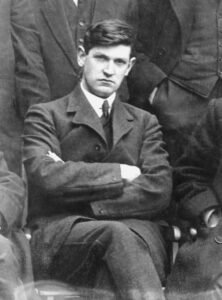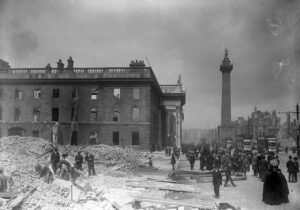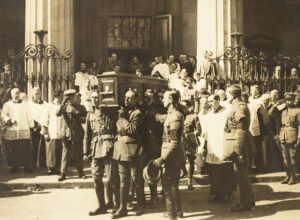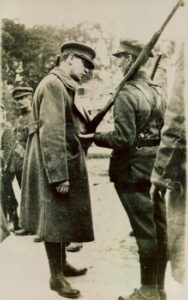
 Like the United States, Ireland wanted to be free from the rule of the Britain…to become a sovereign nation. Also, like the United States, the British did not want to release Ireland. So began The Irish War of Independence also known as the Anglo-Irish War. The war was fought guerrilla warfare style in Ireland from 1919 to 1921 between the Irish Republican Army (IRA, the army of the Irish Republic) and British forces, which included the British Army, along with the quasi-military Royal Irish Constabulary (RIC) and its paramilitary forces the Auxiliaries and Ulster Special Constabulary (USC).
Like the United States, Ireland wanted to be free from the rule of the Britain…to become a sovereign nation. Also, like the United States, the British did not want to release Ireland. So began The Irish War of Independence also known as the Anglo-Irish War. The war was fought guerrilla warfare style in Ireland from 1919 to 1921 between the Irish Republican Army (IRA, the army of the Irish Republic) and British forces, which included the British Army, along with the quasi-military Royal Irish Constabulary (RIC) and its paramilitary forces the Auxiliaries and Ulster Special Constabulary (USC).
It was in the early part of the century, that a man names Michael Collins joined Sinn Fein, which was an Irish political party dedicated to achieving independence for all Ireland. The Sinn Fein party became the unofficial political wing of militant Irish groups in their struggle to throw off British rule from its inception. The idea of giving Ireland “Home Rule” was not a new one. It was first introduced in 1911, when the British Liberal government approved negotiations for Irish Home Rule, but the Conservative Party opposition in Parliament, combined with Ireland’s anti-Home Rule factions, defeated the plans. Then, with the outbreak of World War I, the British government tabled further discussion of Irish self-determination. It was then that Collins and other Irish nationalists responded by staging the Easter Rising of 1916.
In 1918, with the threat of conscription (conscription is the state-mandated enlistment of people in a national service, mainly a military service) being imposed on the island, the Irish people gave Sinn Fein a majority in national elections, and the party established an independent Irish parliament, Dail Eireann, which declared Ireland a sovereign republic. This was, of course, in direct rebellion against British rule. Collins led the Irish Volunteers, a prototype of the Irish Republican Army, in a widespread and effective guerrilla campaign against British forces in 1919. The war went on for another two years before a cease-fire was finally declared. Collins 
 stepped up a one of the architects of the historic 1921 peace treaty with Great Britain, which finally granted autonomy to southern Ireland. Their work had finally paid off.
stepped up a one of the architects of the historic 1921 peace treaty with Great Britain, which finally granted autonomy to southern Ireland. Their work had finally paid off.
It seemed that maybe, finally all was finally right in Southern Ireland, and in January 1922, Sinn Fein founder Arthur Griffith was elected president of the newly established Irish Free State. Griffith appointed Collins to be his finance minister. Collins held the post until he was assassinated by Republican extremists in an ambush in west County Cork, Ireland on August 22, 1922. He was laid to rest in Dublin.


Leave a Reply